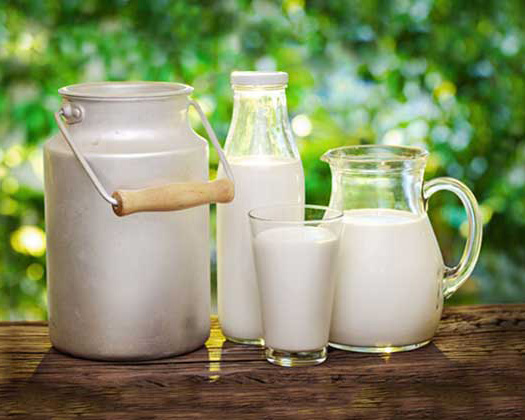Ensuring the purity of milk is crucial for maintaining good health. Adulterated or fake milk can pose serious health risks, including digestive issues, kidney damage, and long-term diseases. Here are five effective methods to distinguish fake milk from real milk, helping you protect your health and that of your family.
1. Visual and Sensory Examination
Smell: Genuine milk has a mild, slightly sweet odor. If the milk smells unusual or has a chemical-like scent, it may be adulterated.
Taste: Authentic milk tastes smooth and creamy. If it tastes watery, soapy, or has an off-flavor, it could be fake.
Texture: Rub a drop of milk between your fingers. Real milk feels smooth, while fake milk may feel oily or sticky due to added chemicals.

2. Boiling Test
Boil a small quantity of milk. Real milk will form a thick layer of cream on top when boiled. Fake milk may not form cream or may leave a soapy residue, indicating the presence of detergents or synthetic substances.
3. Froth Test
Mix equal parts of milk and water in a bottle and shake vigorously. Pure milk will produce little to no froth. If excessive froth forms, it may indicate the presence of detergents or synthetic milk.
4. Starch Test
To check for starch adulteration, boil 2-3 ml of milk and let it cool. Add 2-3 drops of iodine solution. If the mixture turns blue, it indicates the presence of starch, suggesting adulteration.
5. Water Adulteration Test
Place a drop of milk on a polished, slanting surface. Pure milk will either stay or flow slowly, leaving a white trail behind. If it flows quickly without leaving a mark, it may be diluted with water.
Consuming fake or adulterated milk can lead to various health issues:
- Digestive Problems: Chemicals like detergents can cause stomach pain, nausea, and vomiting.
- Kidney Damage: Adulterants such as urea and formalin can strain the kidneys, leading to long-term damage.
- Allergic Reactions: Some adulterants may cause skin rashes, itching, or respiratory issues.
- Hormonal Imbalances: Certain chemicals in fake milk can disrupt hormonal balance, leading to various health problems.

Preventive Measures
- Purchase from Trusted Sources: Buy milk from reputable brands or certified dairy farms.
- Check Labels: Ensure the milk is pasteurized and check for certification marks.
- Boil Milk: Always boil milk before consumption to kill potential pathogens.
- Be Cautious During Festivals: Adulteration often increases during festive seasons; remain vigilant.
Being able to distinguish between real and fake milk is essential for safeguarding your health. By employing these simple tests and remaining vigilant, you can ensure that the milk you consume is pure and safe. Always prioritize quality and source your milk from trusted suppliers to protect yourself and your loved ones from the dangers of adulterated milk.

















